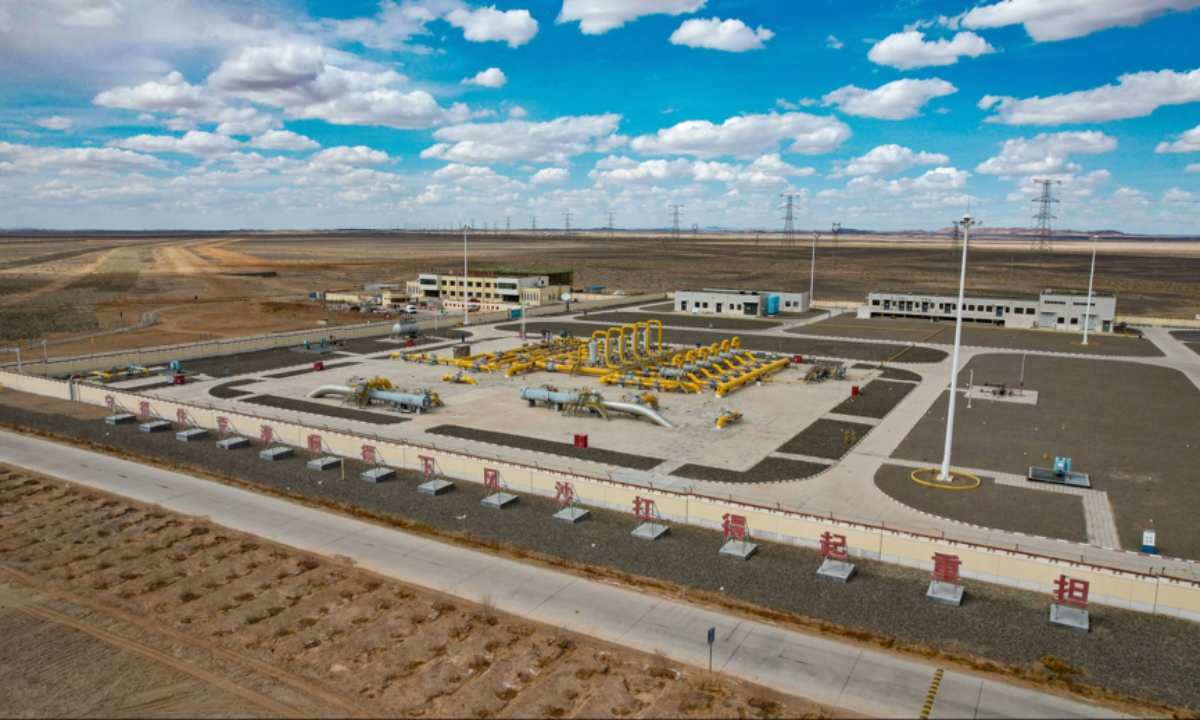
A view of the Hongliu Operation Area, the starting station in Northwest China's Gansu Province for the West-to-East Gas Pipeline Photo: xinhuanet
PipeChina Co announced on Thursday the commissioning of the Gansu-Ningxia section of the 4th West-to-East Gas Pipeline project (from Turpan to Zhongwei), marking the full completion
and operation of the pipeline, which holds significant strategic importance for enhancing China’s energy security,
and jointly building a Green Silk Road in the new era, according to the Xinhua News Agency.
The 4th West-to-East Gas Pipeline project is another strategic energy corridor connecting Central Asia
and China, following the first, second,
and third pipelines, starting from Wuqia county in Northwest China's Xinjiang Uygur Autonomous Region to Zhongwei in Northwest China's Ningxia Hui Autonomous Region, with the core phase from Turpan in Xinjiang to Zhongwei. After commissioning, the pipeline has an annual gas transmission capacity of 15 billion cubic meters, equivalent to replacing 27 million tons of standard coal
and reducing carbon emissions by approximately 50 million tons.
The West-to-East Gas Pipeline system’s annual transmission capacity will reach 100 billion cubic meters, significantly enhancing the cross-regional allocation capacity of natural gas, according to Xinhua.
The Gansu-Ningxia section of the pipeline, now commissioned, spans 1,162 kilometers, starting from Hongliu in Northwest China's Gansu Province
and ending in Zhongwei Junction Station of Northwest China’s Ningxia Hui Autonomous Region.
The pipeline route features very complex geological conditions, predominantly Gobi Desert terrain, with harsh natural environments. Nearly 70 kilometers of the pipeline traverse the Anxi Extreme Arid Desert National Nature Reserve in Gansu, where temperature can reach 80°C some time,
and annual evaporation exceeds precipitation by over 800 times, with extremely fragile ecosystem.
The area hosts 455 species of higher plants, 210 species of vertebrates,
and 387 species of insects, including several nationally protected key wild flora
and fauna, posing multiple challenges to the pipeline's construction
and commissioning, Xinhua reported.
After the full commissioning of the 4th West-to-East Gas Pipeline, it will operate in conjunction with the second
and third West-to-East gas pipelines, further improving China’s northwest energy corridor. This will boost the country’s primary natural gas pipeline transmission capacity beyond 4,000 cubic meters, cementing the reliability
and flexibility of the pipeline network’s gas supply, according to the report.
Moreover, it will transport more Central Asian gas, as well as gas from Tarim Basin in Northwest China’s Xinjiang Uygur Autonomous Region to the Bohai Rim, central,
and southeastern coastal regions. This will have a profound impact on optimizing regional energy structures, improving air quality,
and promoting high-quality economic
and social development along the route, Xinhua said.
Editor:Evan


